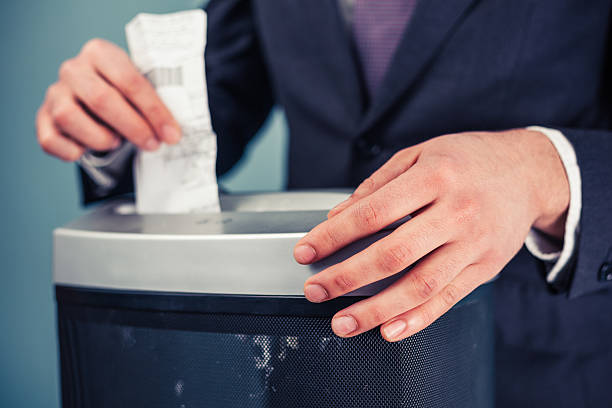In today's digital age, protecting your privacy is more important than ever. With the rise of identity theft and fraud, it's crucial to take steps to safeguard your personal information, including properly disposing of ATM receipts.
In this guide, we'll discuss simple and effective ways to dispose of ATM receipts to protect your privacy and minimize the risk of identity theft and fraud.
1. Shred or Tear Into Small Pieces
One of the easiest and most effective ways to dispose of ATM receipts is to shred them or tear them into small pieces before throwing them away. This ensures that sensitive information, such as your account number and transaction details, cannot be easily read or reconstructed by identity thieves or fraudsters. Investing in a home shredder or tearing the receipts manually is a simple yet powerful way to protect your privacy.
2. Use a Secure Recycling Bin
When disposing of ATM receipts, avoid simply tossing them into the trash bin where they can be easily accessed by others. Instead, use a secure recycling bin with a locking mechanism or a designated shredding service to ensure that your sensitive information remains protected. Many communities offer secure document shredding events or services for residents to safely dispose of sensitive documents, including ATM receipts.
3. Opt for Electronic Receipts
Many banks and financial institutions offer the option to receive electronic receipts for ATM transactions instead of paper receipts. Opting for electronic receipts eliminates the need for physical paper receipts altogether, reducing the risk of exposure to sensitive information. Check with your bank or financial institution to see if they offer electronic receipt options and how to enroll in this service for added privacy and convenience.
4. Keep Track of Transactions
Another important step in protecting your privacy when using ATMs is to keep track of your transactions and reconcile your account regularly. By monitoring your account activity and reviewing your statements frequently, you can quickly identify any unauthorized transactions or discrepancies and take appropriate action to address them. This proactive approach helps to mitigate the risk of identity theft and fraud and ensures that you maintain control over your financial information.
5. Be Mindful of Public ATMs
When using ATMs located in public places, such as shopping malls, convenience stores, or airports, exercise caution and be mindful of your surroundings. Avoid using ATMs that appear tampered with or suspicious, as they may be compromised by skimming devices or other fraudulent activity. Additionally, be discreet when entering your PIN and cover the keypad with your hand to prevent others from seeing your personal information.
6. Secure Your Physical and Digital Devices
In addition to properly disposing of ATM receipts, it's essential to secure your physical and digital devices to protect your privacy comprehensively. Keep your wallets, purses, and mobile devices secure and avoid leaving them unattended in public places. Use strong, unique passwords for your online banking accounts and enable additional security features, such as two-factor authentication, to prevent unauthorized access.
Final Thoughts
In conclusion, properly disposing of ATM receipts is a simple yet essential step in protecting your privacy and minimizing the risk of identity theft and fraud. By shredding or tearing receipts into small pieces, using secure recycling bins, opting for electronic receipts, monitoring your account activity, being mindful of public ATMs, and securing your physical and digital devices, you can safeguard your personal information and maintain control over your financial privacy. At POSPaper.com, we're committed to helping our customers protect their privacy and security. Explore our range of high-quality paper products and accessories today and take the first step towards a safer and more secure banking experience.

